A nice secondary effect of writing this newsletter is getting an influx of responses when I write on a specific topic. Last week it was agtech. I expressed a bit of disappointment in the category. So many robotics firms have either failed or been acquired. That’s just kind of how it goes, here in robotics startupland, but there’s so much room for potential in the category. The seeds have been planted, it’s time to harvest.
John Deere is well positioned to corner the market, through it’s own footprint/brand recognition, in-house research and a bunch of acquisitions. But come on, folks, it’s food. I eat, you eat it. Farmers grown it, our bodies break it down and convert it into energy. Building blocks of life, people. You know the food pyramid? Everyone talks about grains this, fats that. Thing is, the whole thing is good.
There’s a lot of room for innovation, and many or most of the essential pieces are there: autonomous driving (in a far less risky setting than a city street), computer vision, machine learning, soft robotics grippers. Labor is in short supply and the average age of an American farmer is hovering around 58 years. I’ve been getting a number of pitches after last week’s Actuator, and it’s great to see this stuff being deployed in fields for testing.
Image Credits: Iron OX
One piece of the puzzle I’ve probably not given enough column space to is greenhouses. A 2019 report puts the total acres of U.S. greenhouse farming at 1,228,000. And, frankly, when it comes to greenhouse growing, the United States lags behind other markets, including the Netherlands, which has led the way for a few decades now. Like vertical farming, there are a number of reasons to be excited about the future of greenhouses, including sustainability and food security. And unlike many vertical farms, greenhouses draw direct energy from the sun.
While it’s true the category is a drop in the bucket compared to more traditional farming, I would be keeping a very close eye on things were I a roboticist. Remember that thing I said about having fewer potential risks deploying autonomy on a farm versus a city street? Well, greenhouses are an extremely controlled environment — something akin to the warehouse fulfillment category, in many cases with even fewer humans to navigate around.
Iron Ox has received the most column ink (and raised a ton of money) in the category. The company’s wheeled robots pick up and move trays of greens to address their needs, while a robotic arm harvest the crops. Other names include MetoMotion, which has developed a robotic picker. The Israeli firm closed a $5 round lateish last year.
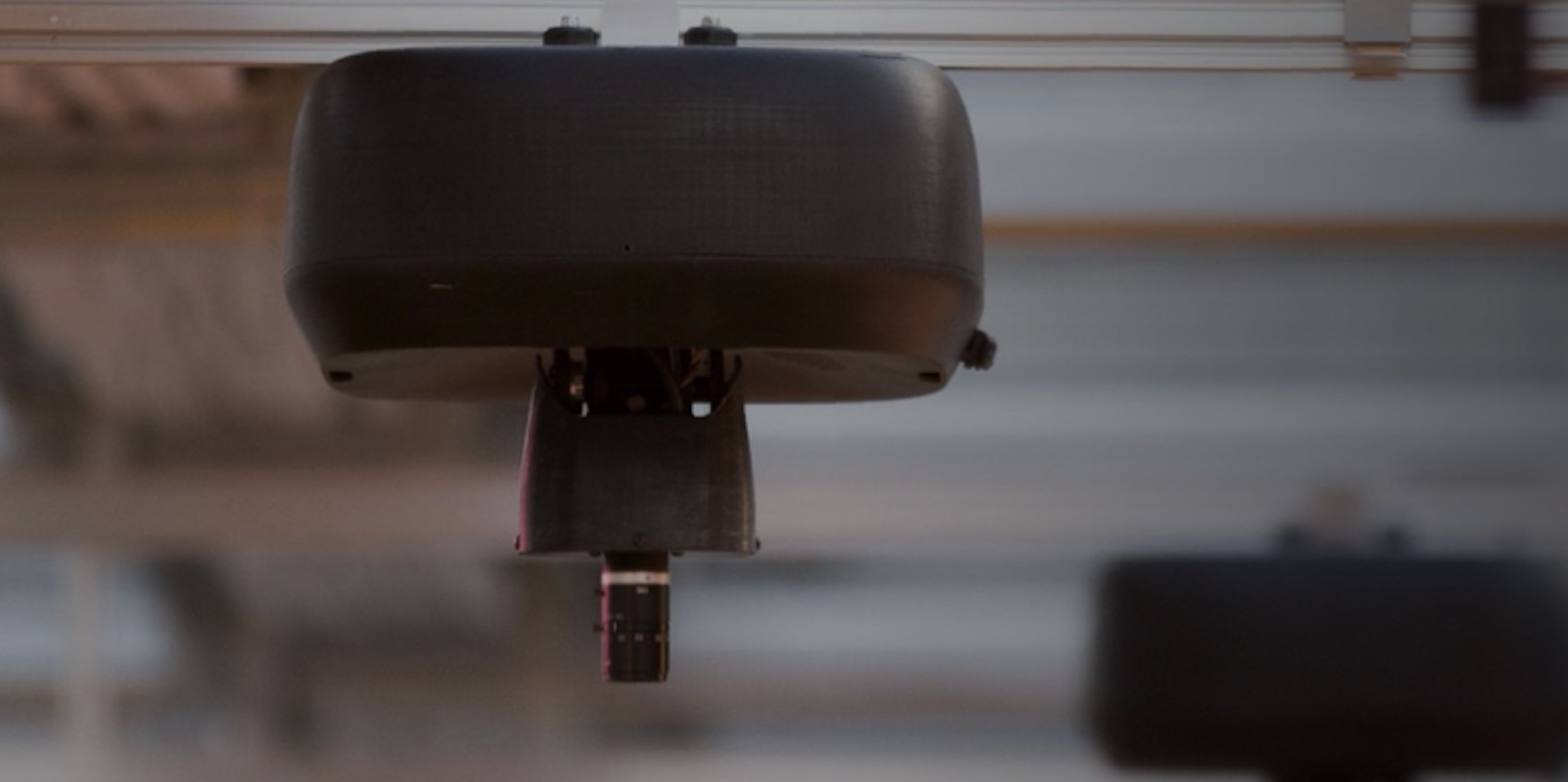
Image Credits: IUNU
Earlier this week, I wrote about IUNU. It’s not a great name — or even a particularly good one. It’s pronounced “you knew” somehow, and the startup’s former “iUNU” stylization is now “IUNU,” all of which isn’t particularly helped by the fact that it has a robot named “LUNA.” That said, LUNA is pretty neat, effectively running along a track on a greenhouse ceiling to get a bird’s eye view of how plants are growing — and save farmers a lot of extra steps in the process. That, coupled with some of these picking robots paint a picture of more fully autonomous greenhouses in the future, if that’s a route owners are looking to go.
Meantime, IUNU just raised $24 million. “This round of investment reflects the confidence institutional investors have in us,” CEO Adam Greenberg says in a release. “The conversation around autonomous growing has accelerated in the past year, and we’re proud to be leading the way on this front.”
This week, the Stanford Institute for Human-Centered Artificial Intelligence (HAI) released its annual AI Index Report. A couple of facts are relevant to our interests here. Quoting some bullets directly from an HAI blog post:
- Private investment in AI has more than doubled since 2020, in part due to larger funding rounds. In 2020, there were four funding rounds worth $500 million or more; in 2021, there were 15.
- AI has become more affordable and higher performing. The cost to train an image classification has decreased by 63.6% and training times have improved by 94.4% since 2018. The median price of robotic arms has also decreased fourfold in the past six years.
- The United States and China have dominated cross-country research collaborations on AI as the total number of AI publications continues to grow. The two countries had the greatest number of cross-country collaborations in AI papers in the last decade, producing 2.7 times more joint papers in 2021 than between the United Kingdom and China—the second highest on the list.
- The number of AI patents filed has soared—more than 30 times higher than in 2015, showing a compound annual growth rate of 76.9%.
No shock, really, about the rate of interest — or money — but after covering the whole Huawei situation closely for the past several years, it’s nice to see American and Chinese research facilities working together here.
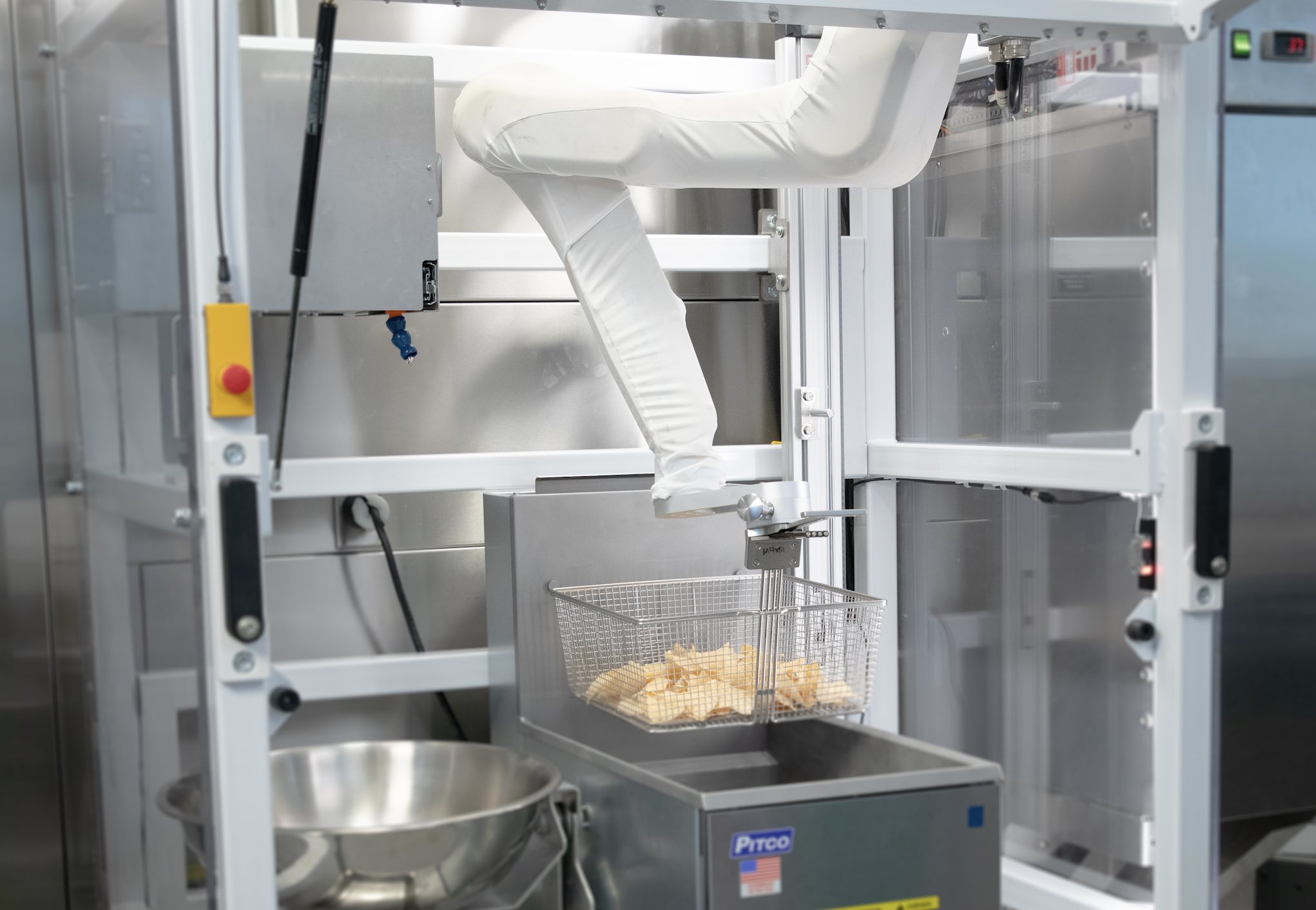
Image Credits: Miso Robotics
Meanwhile, over in Miso Robotics, Flippy and Sippy meet Chippy. R.I.P. me.
Bear Robotics continues to ride high on funding interest amid ongoing staffing shortages. The restaurant robotics company just raised $81 million.
“Having started my own restaurant years ago, I learned firsthand just how hard things could get,” says founder/CEO John Ha. “I thought there must be a way to automate some of these repetitive tasks without losing what makes a restaurant great. That’s why we created Servi. It’s a solution meant to enhance the experience of customers, employees, and operators. While others are trying to fully automate work, we’re trying to elevate the future of work for stakeholders in this industry that keep it going each day.”
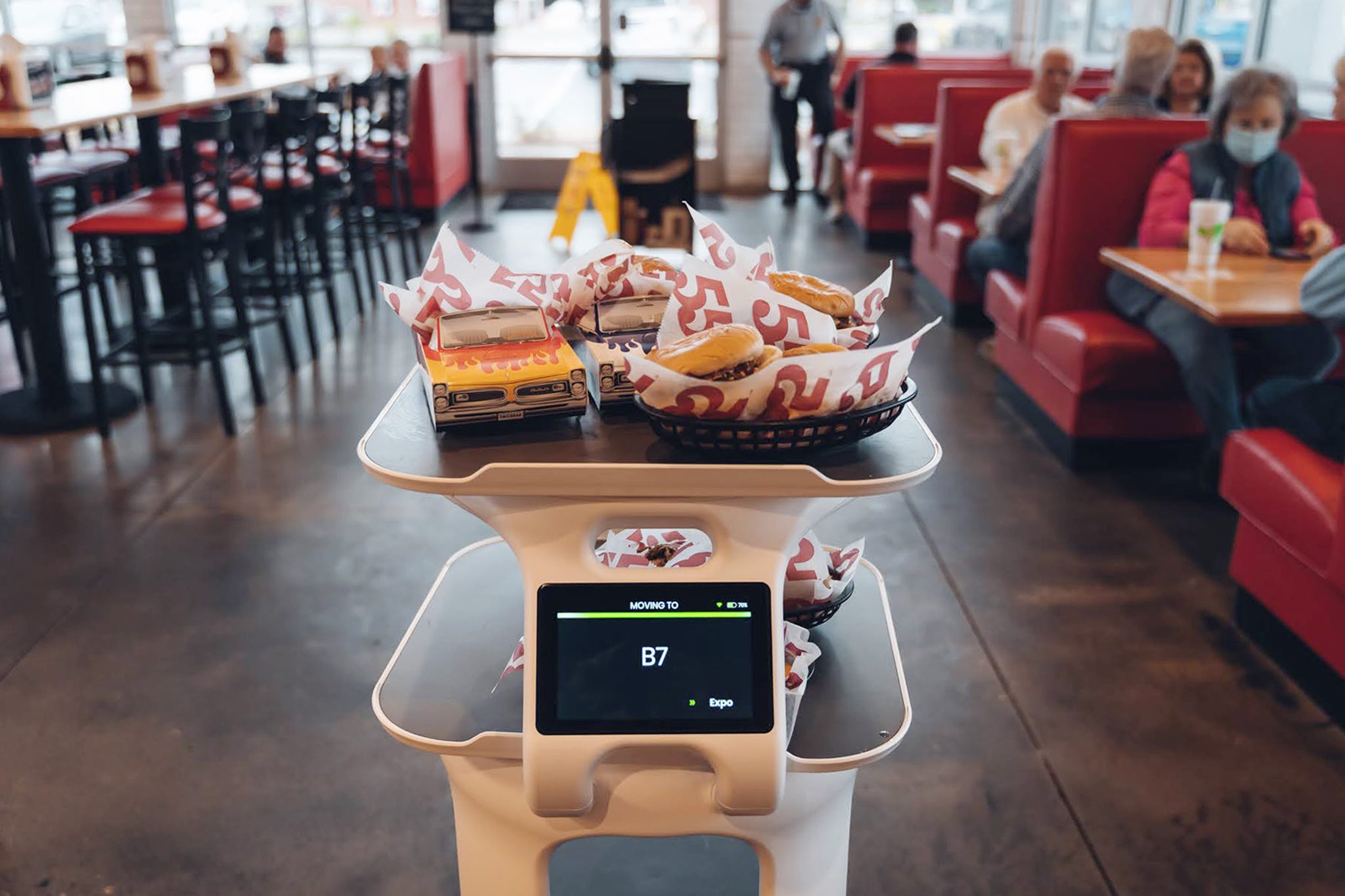
Image Credits: Bear Robotics
Bear says its Servi robot has thus far delivered 28 million meals over a combined 335,000 miles.
We covered Third Wave Automation’s $40 million Series D last year. This week, the Bay Area firm announced a new autonomous forklift, the TWA Reach. It’s the first product resulting from a partnership with forklift maker, Clark. Per the companies, “The automated truck is most suitable for those warehouses and distribution centers looking to improve overall pallet movement productivity and operator efficiency in and around existing racking.”
If you haven’t spent a lot of time around warehouses, you might be shocked by how common forklift accidents are. OSHA puts the number at 34,900 serious accidents, 61,800 non-serious and 85 deaths each year in the U.S. alone.
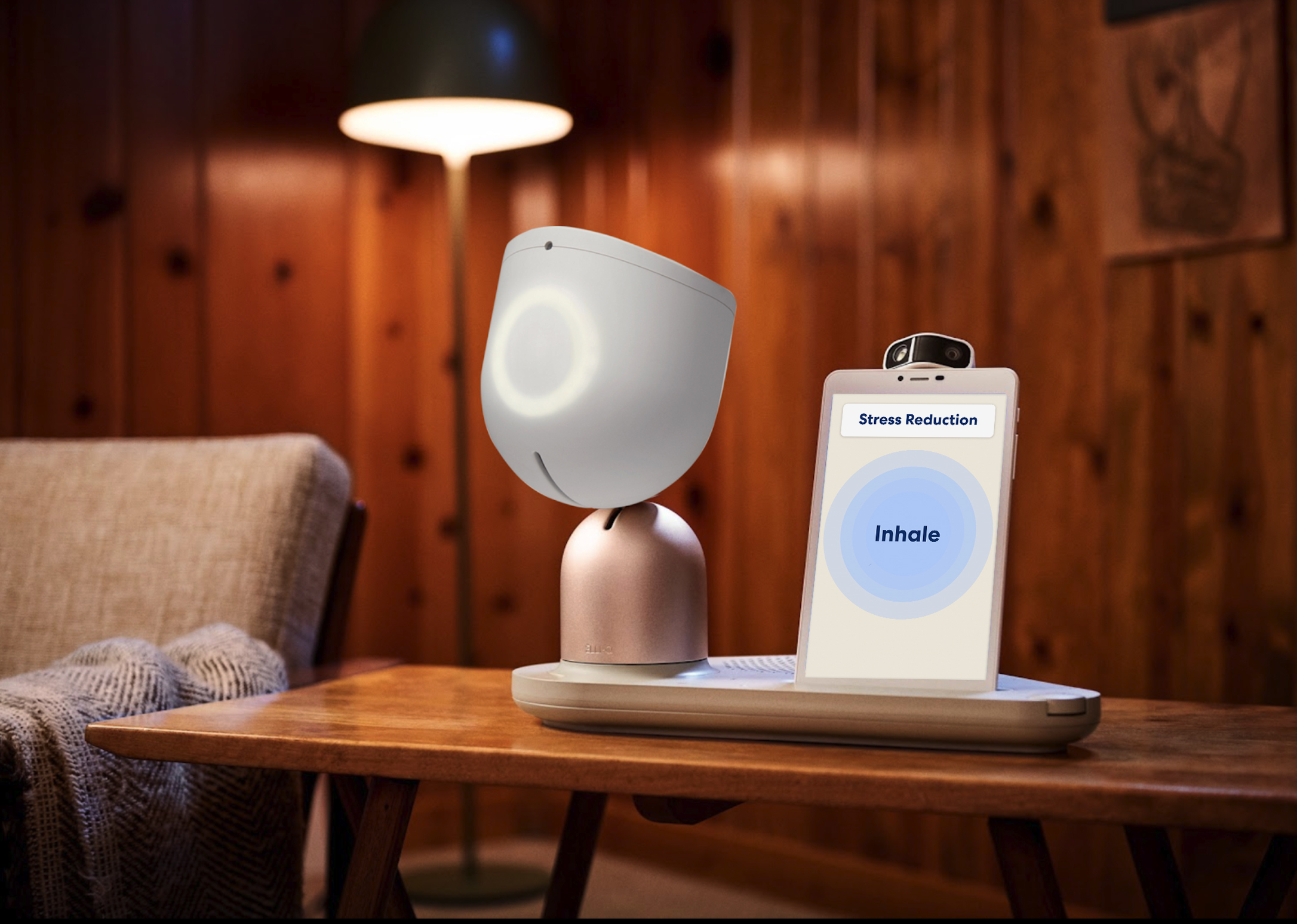
Image Credits: Intuition Robotics
At long last, the ElliQ eldercare robot is finally available from Intuition Robotics. It’s been several years of beta testing and multiple funding rounds since we first saw the little robot in action, and now it’s finally available. The product is designed for older users who are still able to live independently, but might need a little assist. It runs $250 upfront and $30 a month.
Over in car land, Ford wins hardware buzz bingo with a robot arm designed to operate a Carbon 3D printer. As noted in our piece, robots have been helping build Ford cars for a long time now. This latest application uses KUKA robots to print small batches of custom parts, including things like a brake line bracket for Mustang Shelby GT500. They’re hoping to scale things up — but, then, so is everyone in 3D printing land.
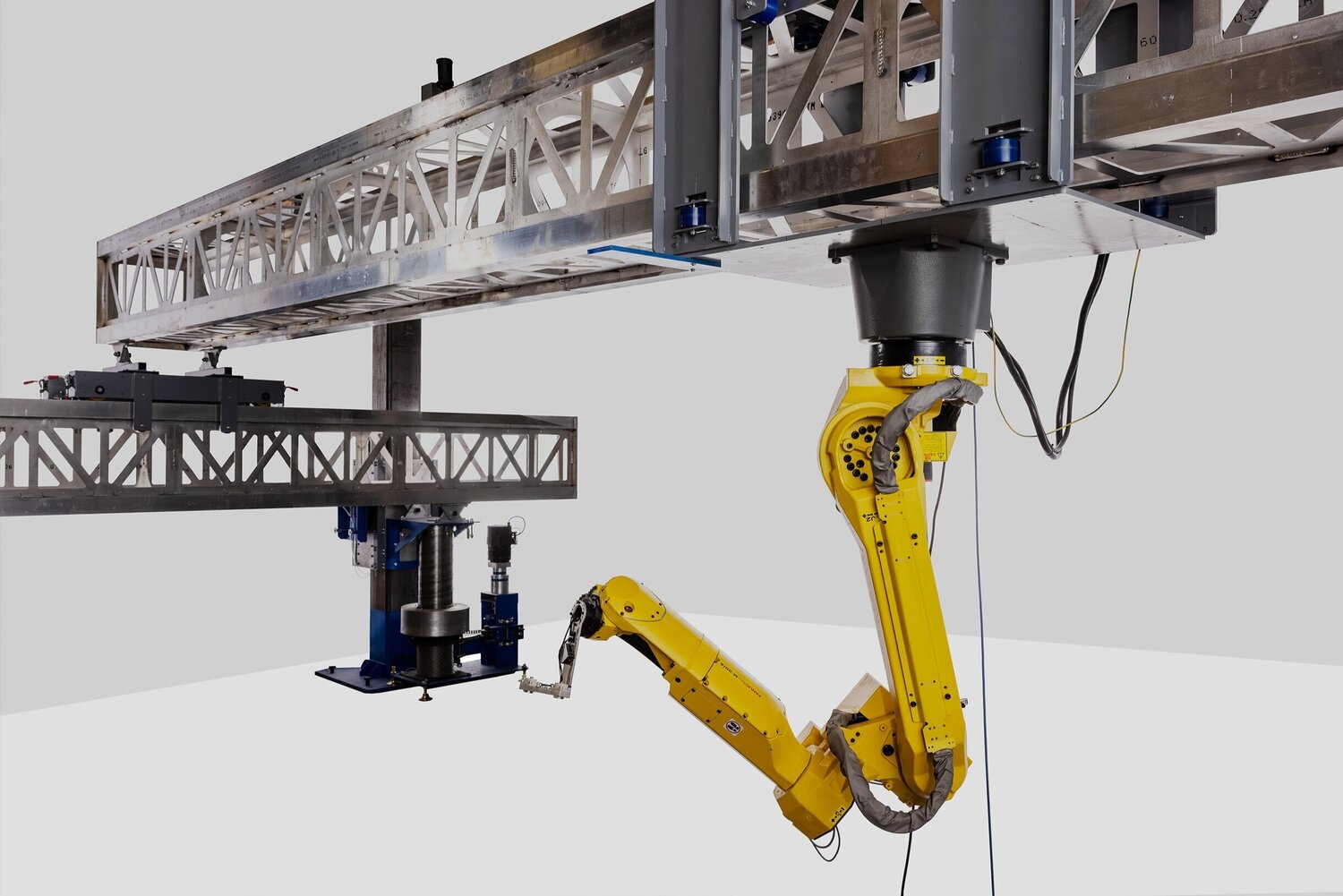
Image Credits: Diamond Age
I suppose you could say Diamond Age has scaled things up in a more literal sense. The company uses its own combination of robot arms and additive manufacturing to 3D print houses. After a recent $8 million raise, it just added another $50 to its coffers.
“Affordable housing is impacting people on a global scale. As the average age for first-time homebuyers has moved from mid-twenties to mid-thirties, there’s an increased demand for more rental property — forcing the entire hierarchy of renters into a more competitive market for ‘quality’ housing,” says co-founder/CEO Jack Oslan. “Helping the next generation of homebuyers get into their first house faster helps the entire ecosystem of housing.”
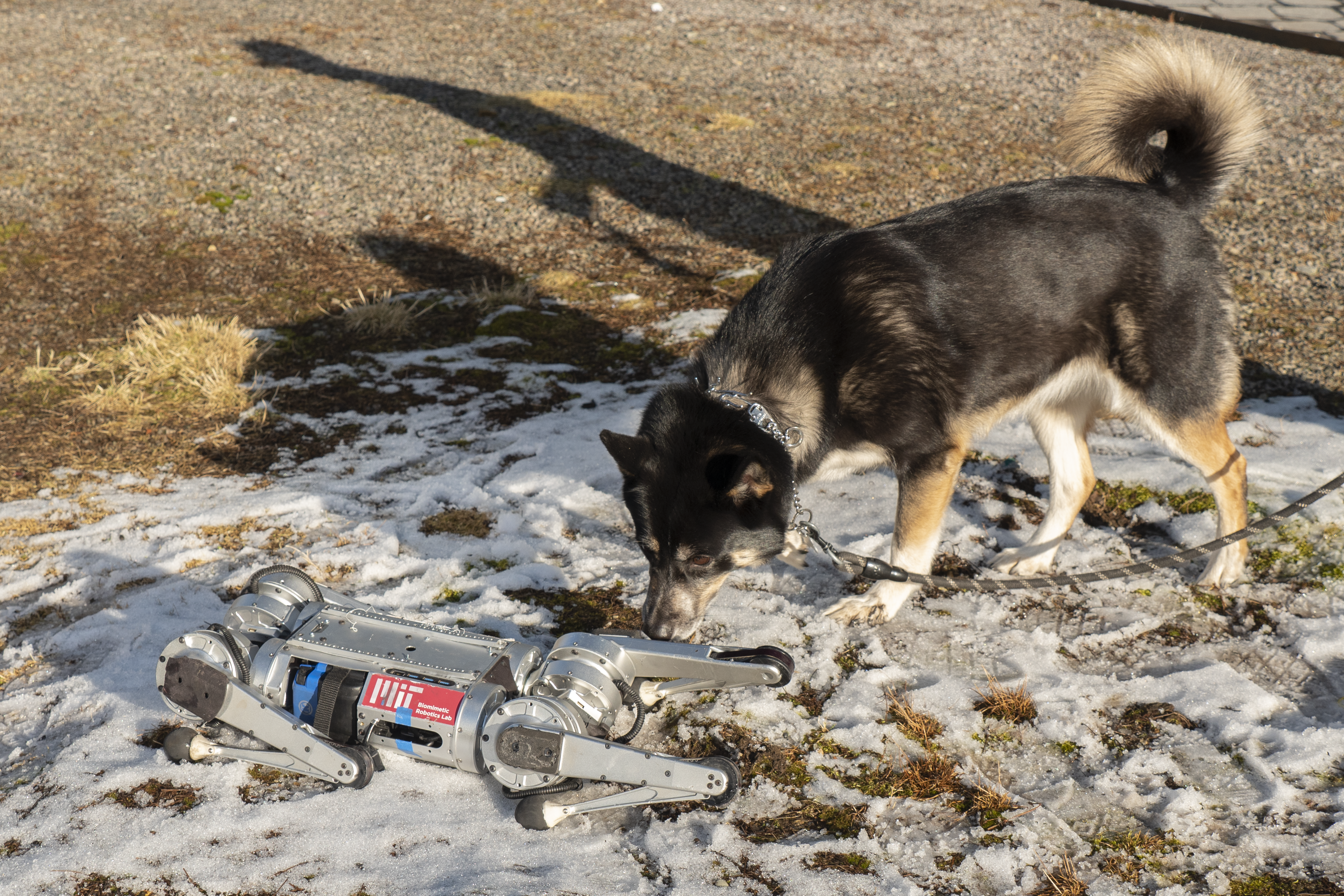
Image Credits: MIT CSAIL
We’ve got an old friend returning to close us out this week. MIT CSAIL’s Mini Cheetah recently learned to run a lot faster. Says the team:
At the heart of artificial intelligence research is the tradeoff between what the human needs to build in (nature) and what the machine can learn on its own (nurture). The traditional paradigm in robotics is that humans tell the robot both what task to do and how to do it. The problem is that such a framework is not scalable, because it would take immense human engineering effort to manually program a robot with the skills to operate in many diverse environments. A more practical way to build a robot with many diverse skills is to tell the robot what to do and let it figure out the how. Our system is an example of this. In our lab, we’ve begun to apply this paradigm to other robotic systems, including hands that can pick up and manipulate many different objects.

Image Credits: Bryce Durbin/TechCrunch
Run, don’t walk to the Actuator subscription page. Or walk. I don’t care. You’ve got a full week to get there.
Read the original article @ TechCrunch


